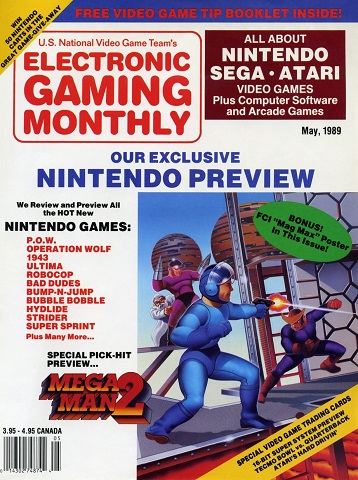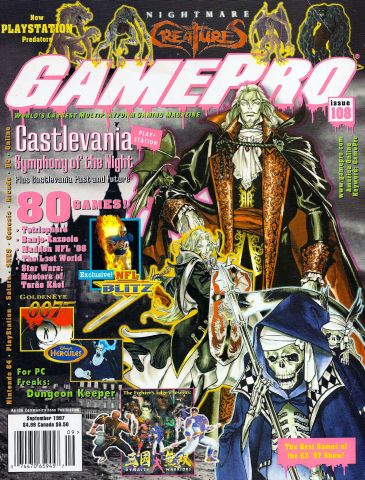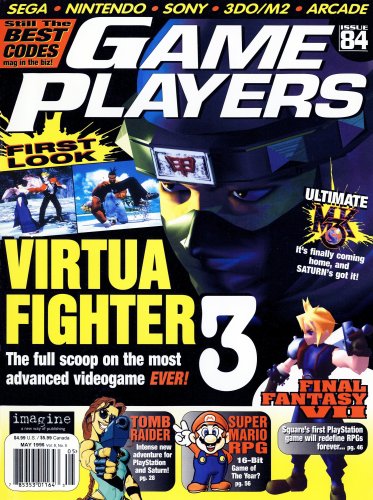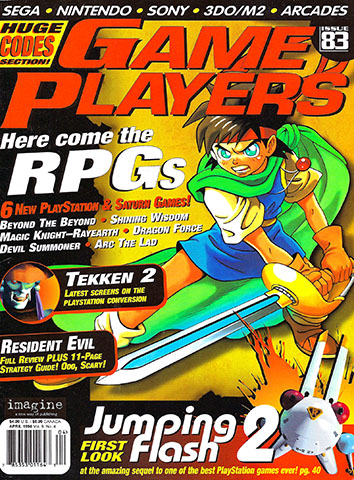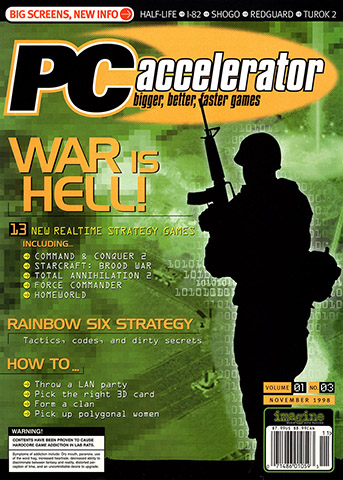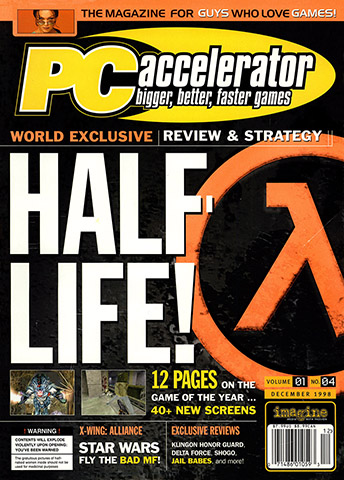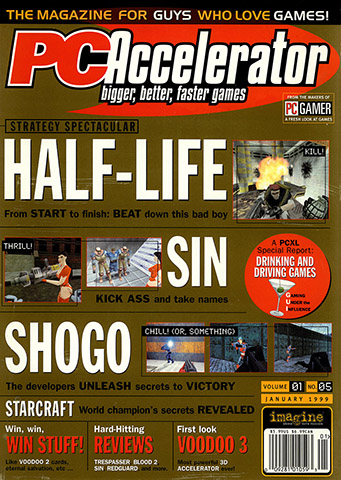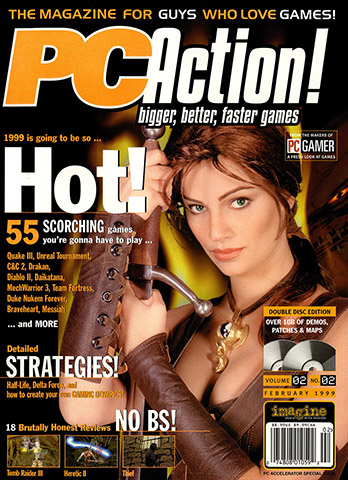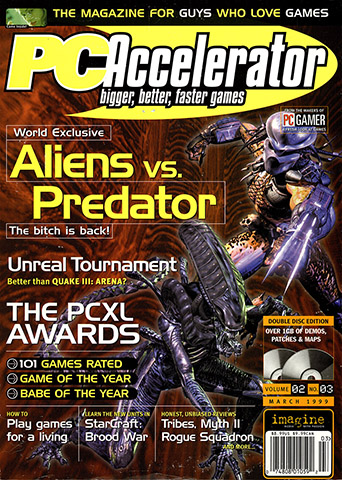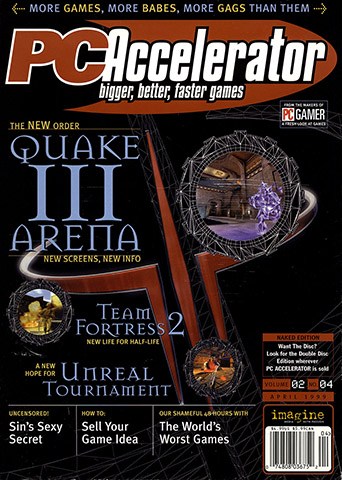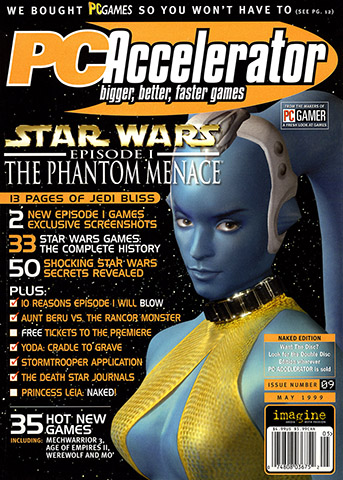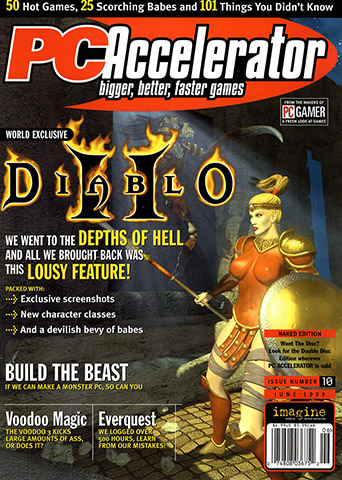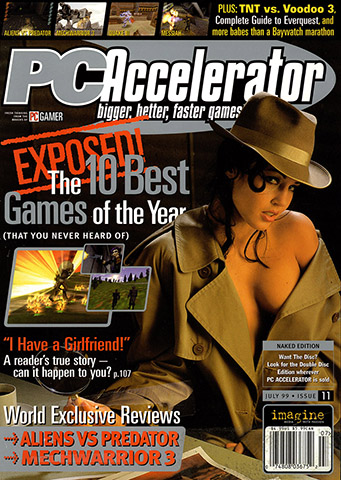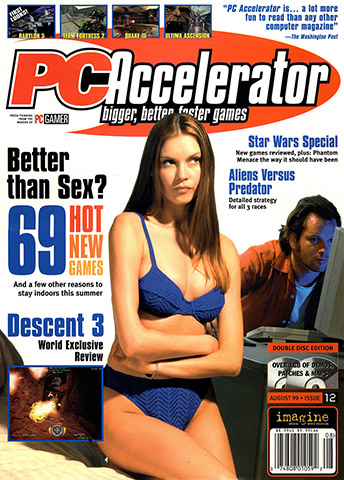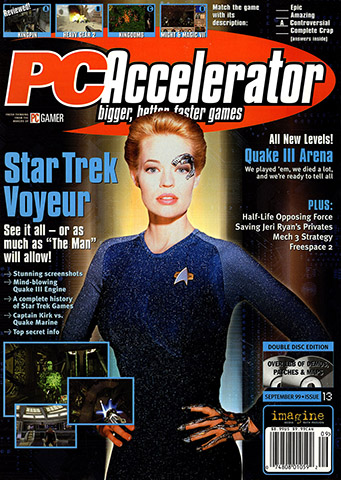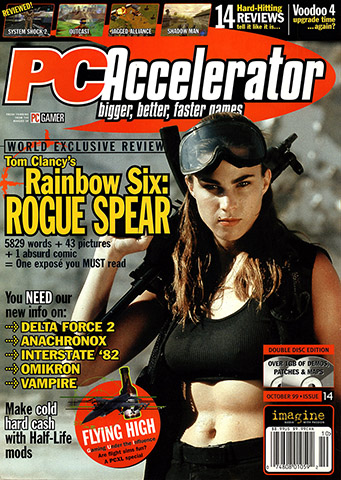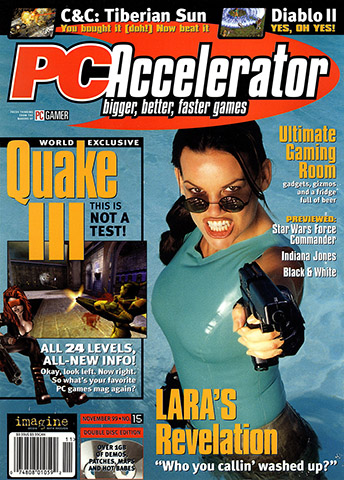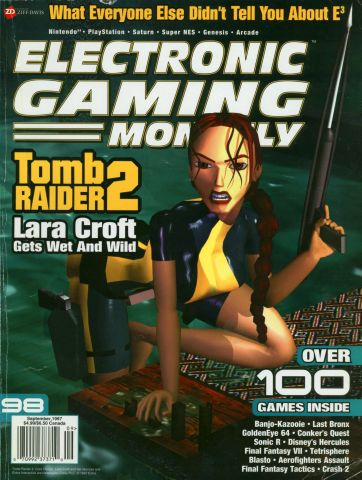Leaderboard
Popular Content
Showing content with the highest reputation on 10/27/2024 in all areas
-
70 downloads
ADULTS ONLY I always give my mags a last look-see in two-page mode before releasing them to make sure everything is up to snuff. I don't know why, but it really struck me how I hope everyone else takes the occasion to do the same thing at least once, using a CBR reader that was actually MADE for CBRs, not some P.O.S. PDF reader like Sumatra that inserts a break between facing pages. Something about the big characters in the two-page ads filling up the entire screen just looks really nice, but not when a page break dispels the illusion (created through hard work in the editing stage) that you're looking at a single image. This is how mags should look on your screen. One image. Not two halves of a whole. (These are just screenshots of my 1080 monitor display - the colored side borders are automatically created by my CBR reader based on the color profile of the adjacent image, in case anyone is wondering)5 points -
4 points
-
3 points
-
3 points
-
Over the years I've noticed a lot of confusion and misinformation regarding DPI when talking about our scans, and it's even confused me a bit, so I thought I'd lay a couple of basics out here for the curious, and explain why it really shouldn't be part of the conversation at all. I'm now finished writing this post and getting tired just looking at it, so feel free to skip to the end if you're impatient. First of all, DPI (dots per inch) is technically terminology that is strictly in reference to printing things onto paper. If an image is printed at 300DPI, there are 300 dots of ink in one square inch of the page. The higher the DPI, the higher the image quality. So in actuality, DPI as a term has nothing to do with digital scans, as it relates strictly to printing. Where this becomes confused is that scanners (the machines, not the people who bring you your magazine fix) also use DPI as the term to describe at what resolution they're scanning the page at. It's actually more accurate to say that a scanner is capturing an image at a specific PPI (number of pixels per square inch of the image being scanned), but DPI is the common parlance, so we'll just ignore that for now. But higher DPI/PPI scan still means a better quality image on your screen, right? RIGHT?? Er. No, it's actually completely irrelevant. (UNLESS you're talking about printing.) The only thing that matters regarding the quality of a scan insofar as how it displays on your screen is its pixel dimensions (resolution) in relation to the DPI/PPI the image was scanned at. By which I mean this: If an image is scanned at 300dpi, then one square inch of that image will contain 90,000 pixels and be 300px high. A 600dpi scan will have 360,000 pixels and be 600px high per square inch of the image being scanned. An A4 piece of paper is 8.3 x 11.7 inches, meaning that a 300dpi scan would result in an image that's 2490px wide by 3510px high. A 600dpi scan of that same A4 paper would be twice those dimensions (4980 x 7020). So YES, setting the DPI higher when scanning creates a higher resolution image. BUT We aren't the Internet Archive. No one here just uploads exactly what came out of the scanner, untouched. We edit out scans to make them look better, and as a final step in that process we make sure that every page in a scan is a constant pixel height. This requires resizing the image. Some people follow E-Day's scan guide which sets the minimum resolution allowed at 2200 px high (which if you compare to the above numbers you'll see is a lower resolution than an untouched 300dpi scan. I scan at 600dpi and like to resize them to the approximate size they would have been if scanned at 300dpi. But once the mag has been resized, DPI no longer has any relevance. A mag scanned at 300dpi and saved at 2200px height is NOT 300dpi. And there's no way to know what DPI a mag is by looking at the file. The metadata in the file will record the DPI the image was saved at, but that has nothing to do with the DPI it was scanned at, nor is it reflective of the quality of its resolution. Here's an example where I took a 600dpi scan of a page which was 7001 pixels high, and halved its pixel dimensions to 3500px high. I then saved it, leaving its DPI at 600. Then I took that same 7001px-high image and halved its DPI to 300, which automatically changed its pixel dimensions to an identical 3500 px high. Whether halving the pixel dimensions or halving the DPI, the result is identical. But look at the metadata: despite having identical pixel dimensions, the copy where I changed the DPI reflects that, while the copy where I changed the pixel dimensions still shows a 600dpi despite actually being half the resolution of the 600dpi scan: Both images have the exact same filesize and pixel dimensions, but anyone looking at the metadata of the image on the right might assume that it has a "resolution" of a 600dpi scan, when it is actually half of that. This is why metadata on dpi is useless when looking at scans, as almost all of them have been resized. The only thing that matters is the resolution (we tend to just refer to the pixel height) and even then, it only applies to its resolution in relation to the original scan. By which I mean, reducing an image's size lowers its resolution, but increasing its size does not increase its resolution. Not that anyone DOES that around here, but you obviously can't scan a mag at a low dpi and then just double its pixel height and claim you've increased its resolution. Good lord, even I need a TLDR on this one: DPI/PPI matters two times only: When you plan to print an image on paper When you're choosing which setting on your scanner to scan a piece of paper at DPI/PPI should NEVER be mentioned when discussing the resolution of a finished and released scan, because it's incredibly unlikely that any scan you see here or elsewhere is exactly the same dpi it was originally scanned at. And if you really want to know the approximate DPI of a scan, just look at the pixel dimensions. Most mags are a bit shorter than A4 size. So is your mag 3150-3500 px high? It's around 300dpi. Is it 2200 px high? That's closer to 200-210dpi. But even so, it's better to just refer to the pixel height when discussing scans to assess their resolution (unless a mag is was printed on paper significantly shorter or taller than a familiar size like A4, in which case you'd need to know the paper size before calculating the approximate DPI).2 points
-
1 point
-
That makes sense, and in the end, with so many local copies, none of this stuff will really ever be lost. Also, I need to remember we are talking about video game magazines and not life-saving EpiPens here, and calm down a bit, haha.1 point
-
I feel very conflicted about this. I think about the amount of time, money, and effort the scanners and editors here have put into archiving magazines here on RetroMags without any compensation. Phillyman, can you please clarify if they are using RetroMags scans for this project? If they are, and the original scanners are not being compensated, I do not feel comfortable supporting this endeavor. Even if the scanners themselves are ok with not being compensated, I would obviously respect their decision, but for me personally I still feel it is crummy. Also, can we get clarification if this means you foresee taking EGM off of here, and if so, if in the future if someone does a GamePro Kickstarter will it mean removing GamePro from here too, and so on... Addendum: I wanted to add something based on what Kit said up above here. I agree with what Kit said and want to add to this -- so we take down all the EGMs here. They put out the PDFs. And the PDFs aren't as high quality as the scans here. So now in order for a future fella to read EGM, he has to pay for inferior versions of what was previously freely available in better versions? Addendum 2: " It's the first preservation effort of its kind for any video game magazine."1 point
-
1 point
-
1 point
-
1 point
-
1 point
-
Next Generation was a US videogame magazine published by Imagine Media. It was affiliated to Edge magazine from the UK, and shared editorial staff. Next Generation ran for 85 issues total (January 1995 to January 2002), and this included the 1999 redesign where they also shortened the name to NextGen. The content was "more focused on game development from an artistic perspective." Interviews featured many of those that worked in the videogame industry and were typically more focused on questions about gaming in general rather than about the details of the latest game or system they were working on. You really did not find entire pages covered with screenshots, the magazine's layout and design was very simple and clean. You would not find walkthroughs, or cheat codes either. The magazine did not use bylines (the name of the one who wrote the article), aside from the regular recurring columns. The editors explained that they felt the magazine's entire staff should share the credit or responsibility for each article and review, even those written by individuals. I really liked these differences, being a departure from most other gaming magazines. I would keep issues around because they had so many different articles I would go back to. Next Generation had a heavy matte laminated finish cover stock, unlike the glossy paper covers of others. They moved away from this cover style in early 1999, only for it to return again in late 2000. Highlights From this Issue: There is a 6-page interview with Trip Hawkings, President of the 3DO Company at this time. A look at the 32X and the Neo Geo CD launch, 3Dlabs new GLINT chip. Some of the regular columns were "Arcadia" by Marcus Webb, an ongoing look at the coin-op industry. And "Generator" from Mark James Ramshaw with a look behind the scenes of game development and rumors. There's an article on videogame violence. We have a brief look at all the consoles out and coming soon, like 3DO, CDi, N64, PlayStation, and Saturn. We have a lot of previews, followed by a number of reviews. Some platforms get several one-paragraph reviews, but a few others are a little longer. Several from 3DO, with a handful of Jaguar, CD-i and Sega CD. Even a few from Genesis and SNES. The reviews were never really in-depth, you didnt see full page reviews (at least not this early), but it was more about the articles and featured interviews. Previews used a full-page layout, so you got more info there. It's a very different feel for a gamming mag, but I enjoyed it so much I would get a subscription.1 point
-
1 point
-
1 point
-
1 point
-
I would sincerely like to Thank everyone involved in bringing EGM to this format. As a person born in the early 70's , this magazine in particular was the one I would wait by the mailbox each month whenever I suspected it to be delivered. All through highschool and until about 2007, I was a faithful subscriber. Once again Thank You guys and gals....1 point
-
1 point
-
Version 1.0.0
595 downloads
Game Players Issue 084 (May 1996) With reviews of such acclaimed classics as Creature Shock, Cyberdillo, and The Raven Project, this issue of Game Players is a big ol' slice of nostalgia pie for the 90s kid in all of us. I kid of course, The Raven Project is next issue. (Seriously though, this issue reviews Worms, Earthworm Jim 2, and Super Mario RPG and previews Tomb Raider, Turok: the Dinosaur Hunter, and Final Fantasy VII).1 point -
1 point
-
1 point
-
1 point
-
1 point
-
1 point
-
1 point
-
1 point
-
1 point
-
1 point
-
1 point
-
1 point
-
1 point
-
1 point
-
1 point
-
1 point

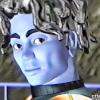


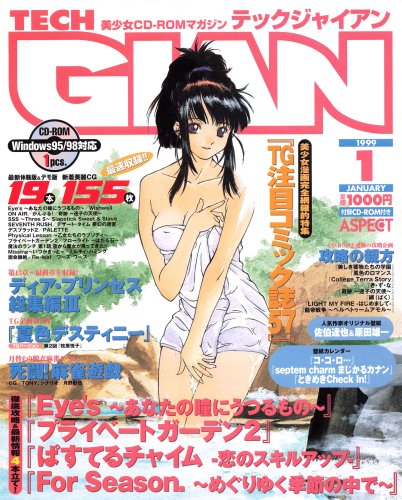

.thumb.jpg.9f9a151158cf730bcb2e036421572d9a.jpg)
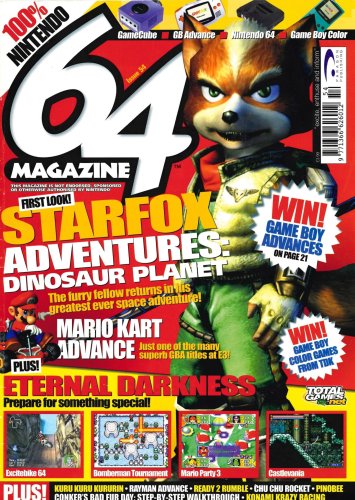
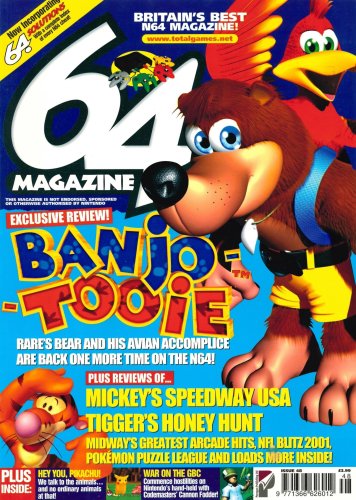


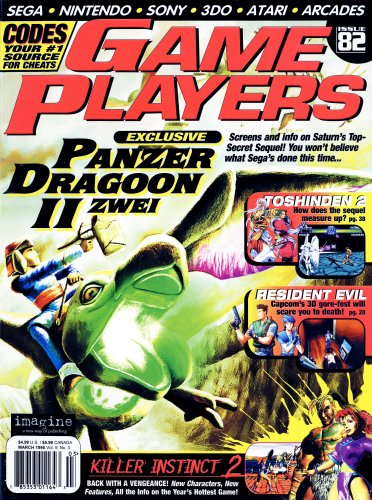
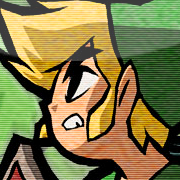
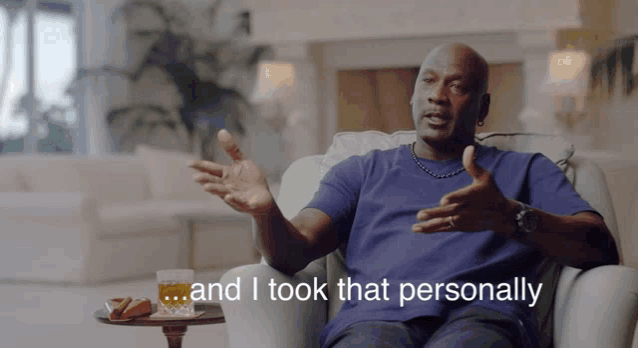



.thumb.jpg.b45be95e5e5f659b57acd1ffdaba2e6a.jpg)
.thumb.jpg.14e718306a236cb9481587cbaaea21c6.jpg)
.thumb.jpg.044a71dd53f52ca9178eb73cb449b030.jpg)

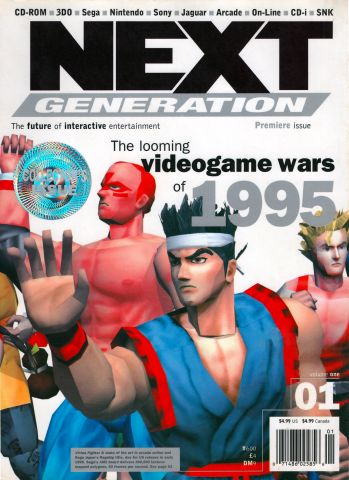
.thumb.jpg.9d3ab69d91502d203cf4953a5f4386e8.jpg)
.thumb.jpg.5772fd721ca4df9921009fa60dc10b5a.jpg)

